








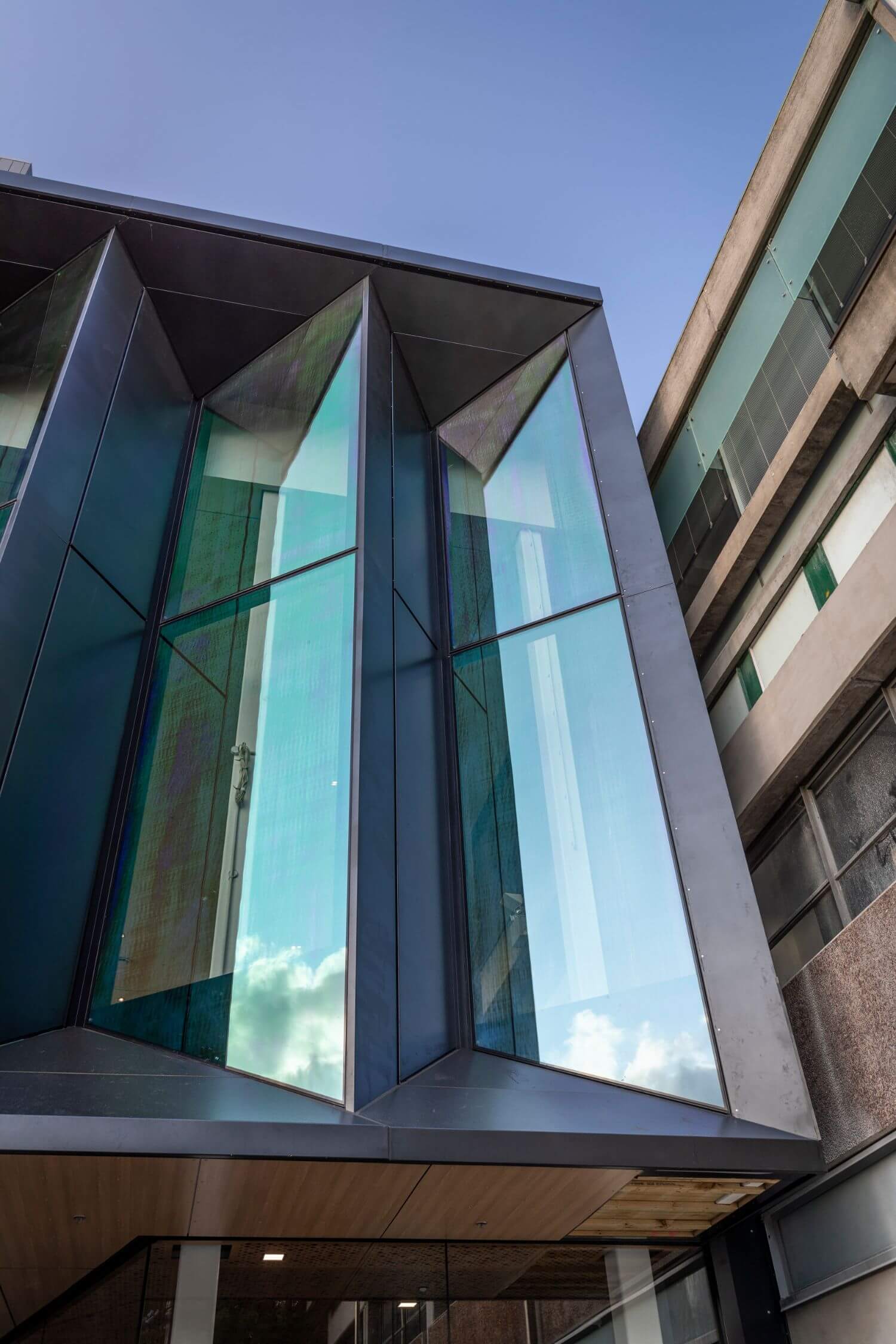





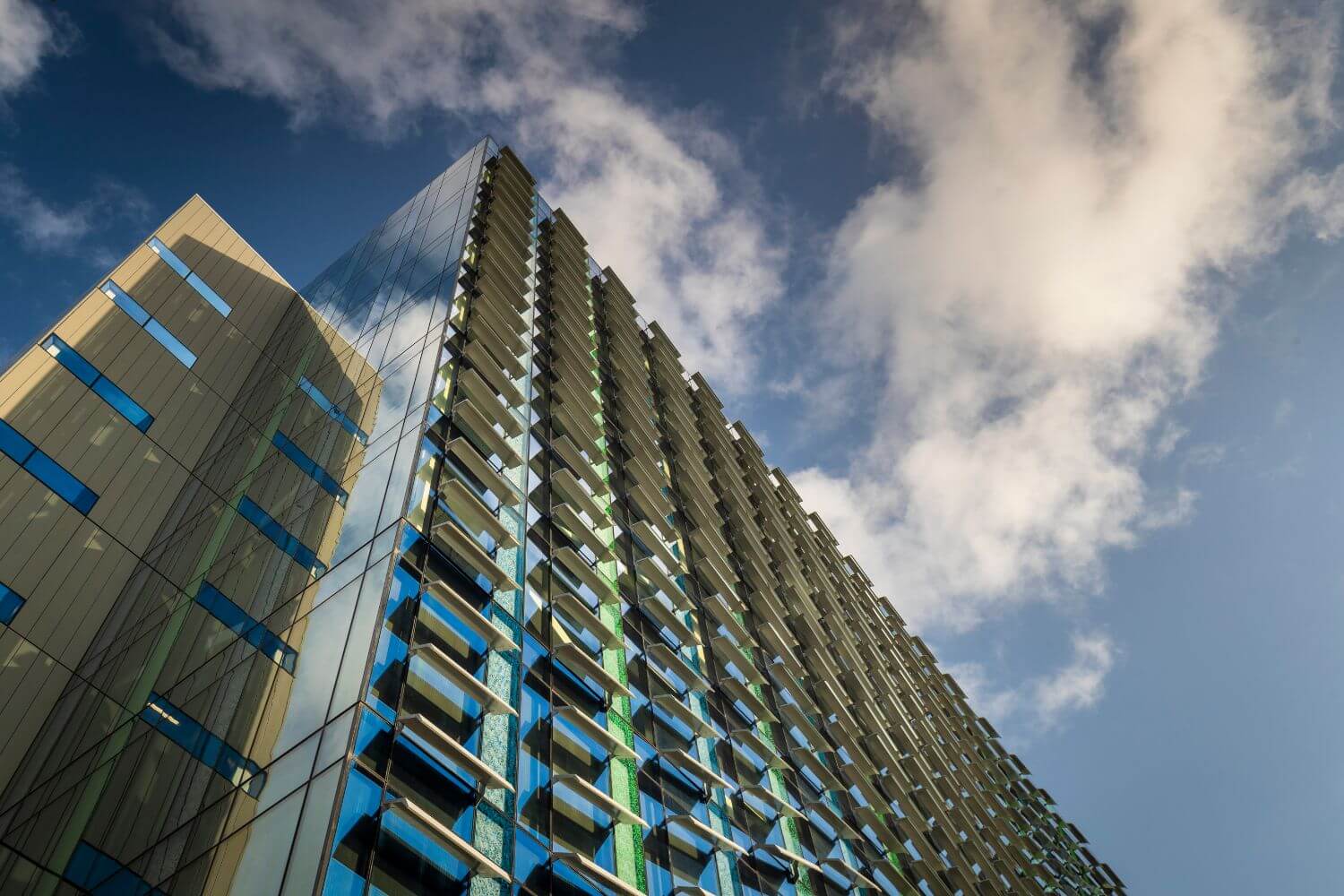






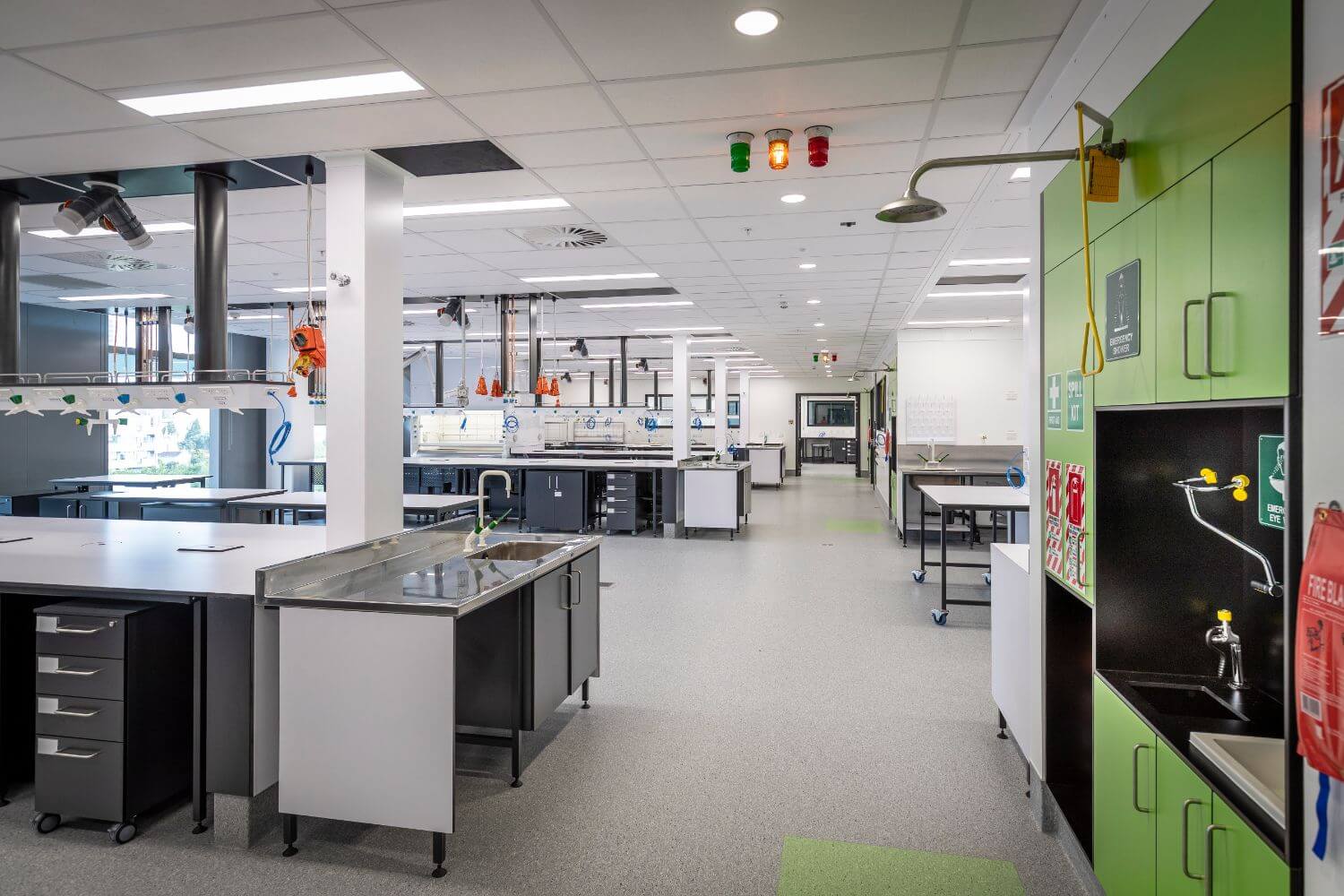











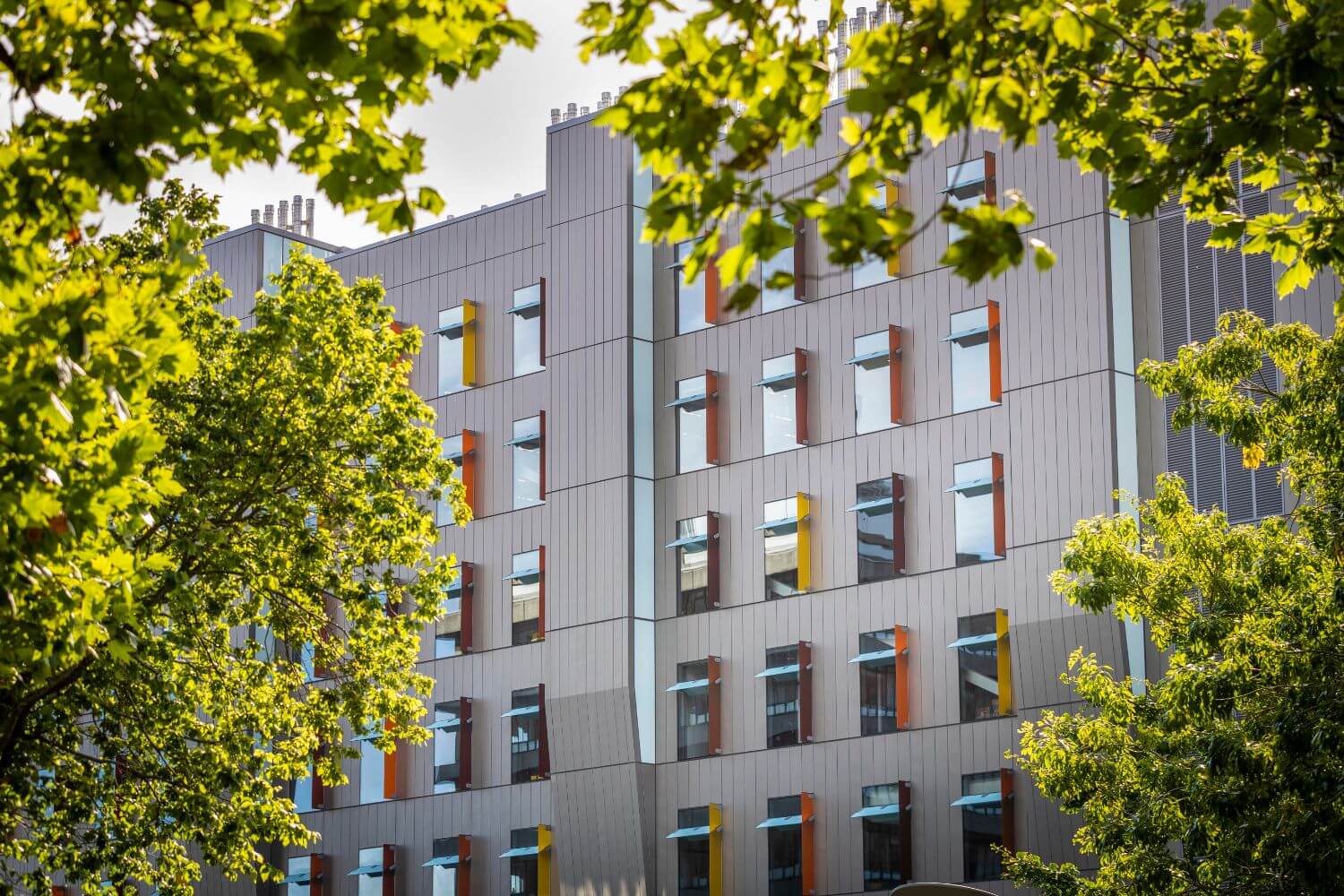












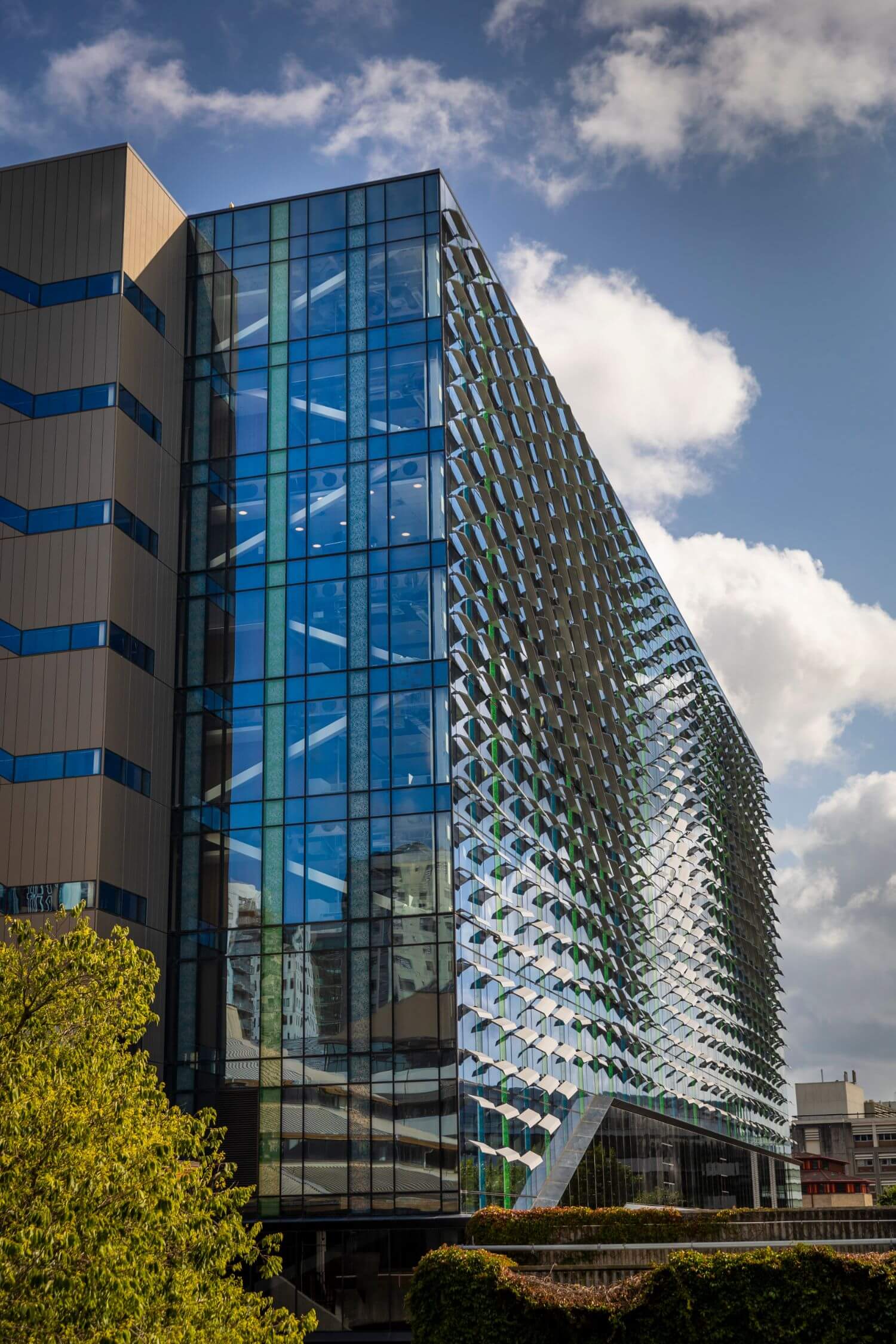







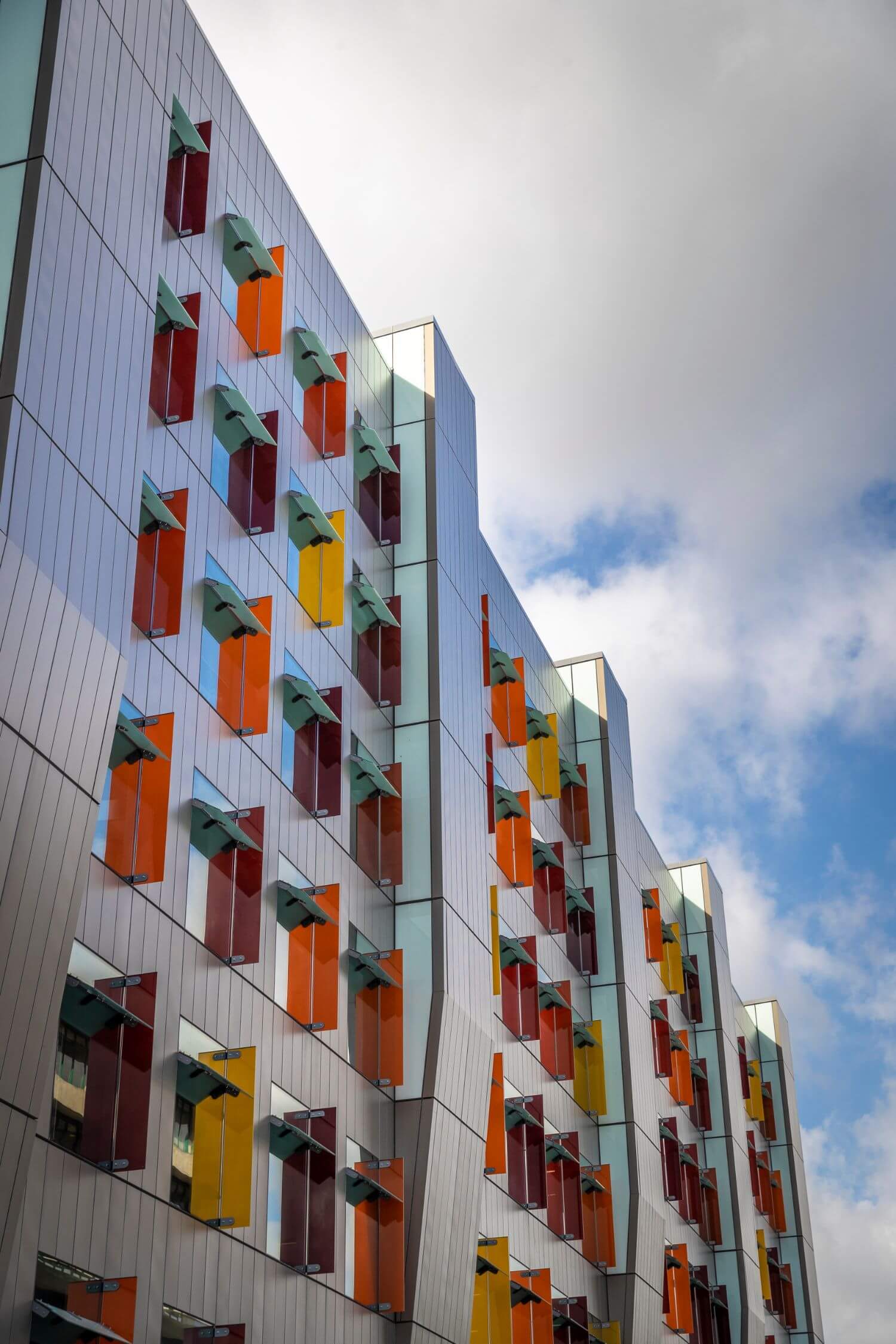









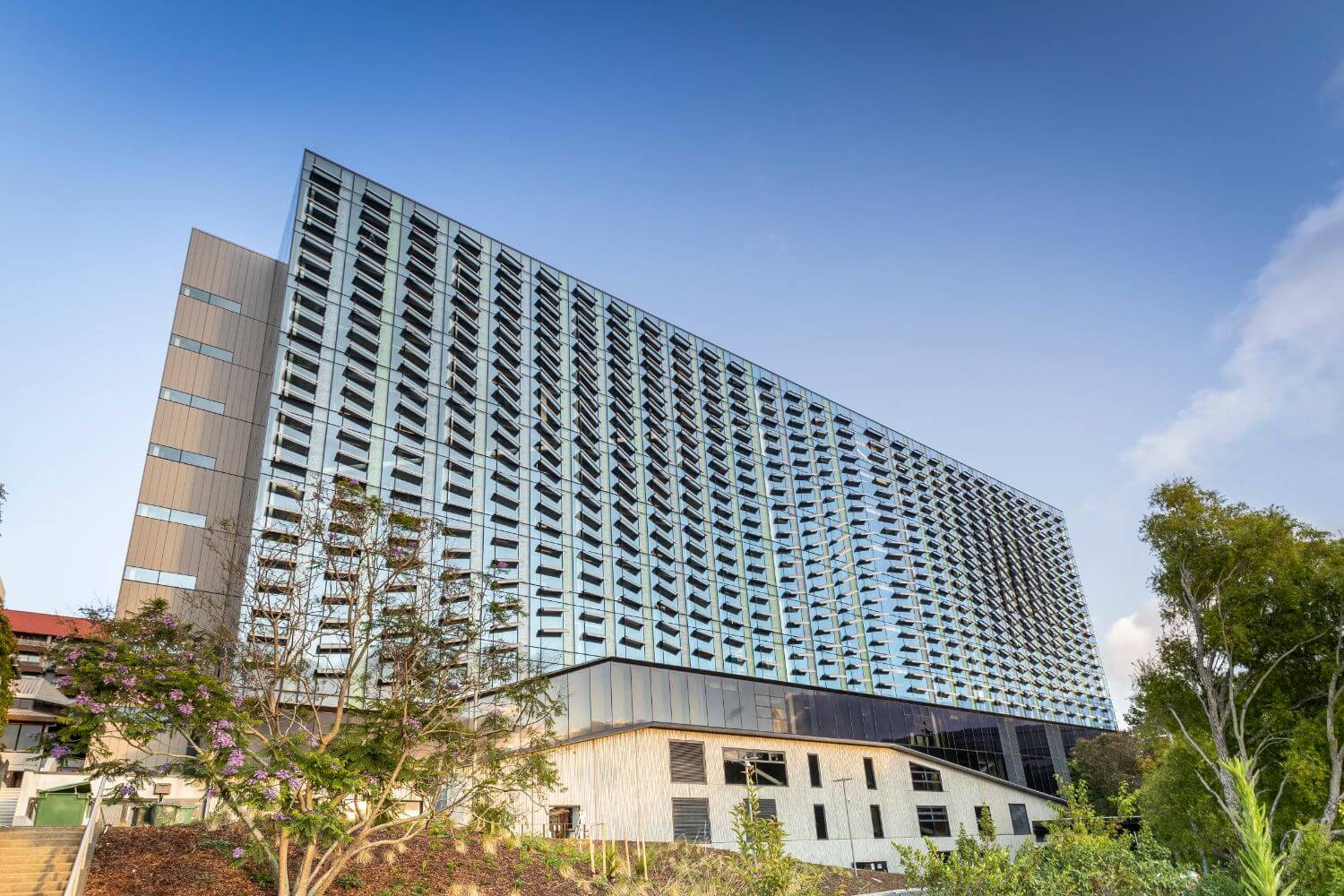





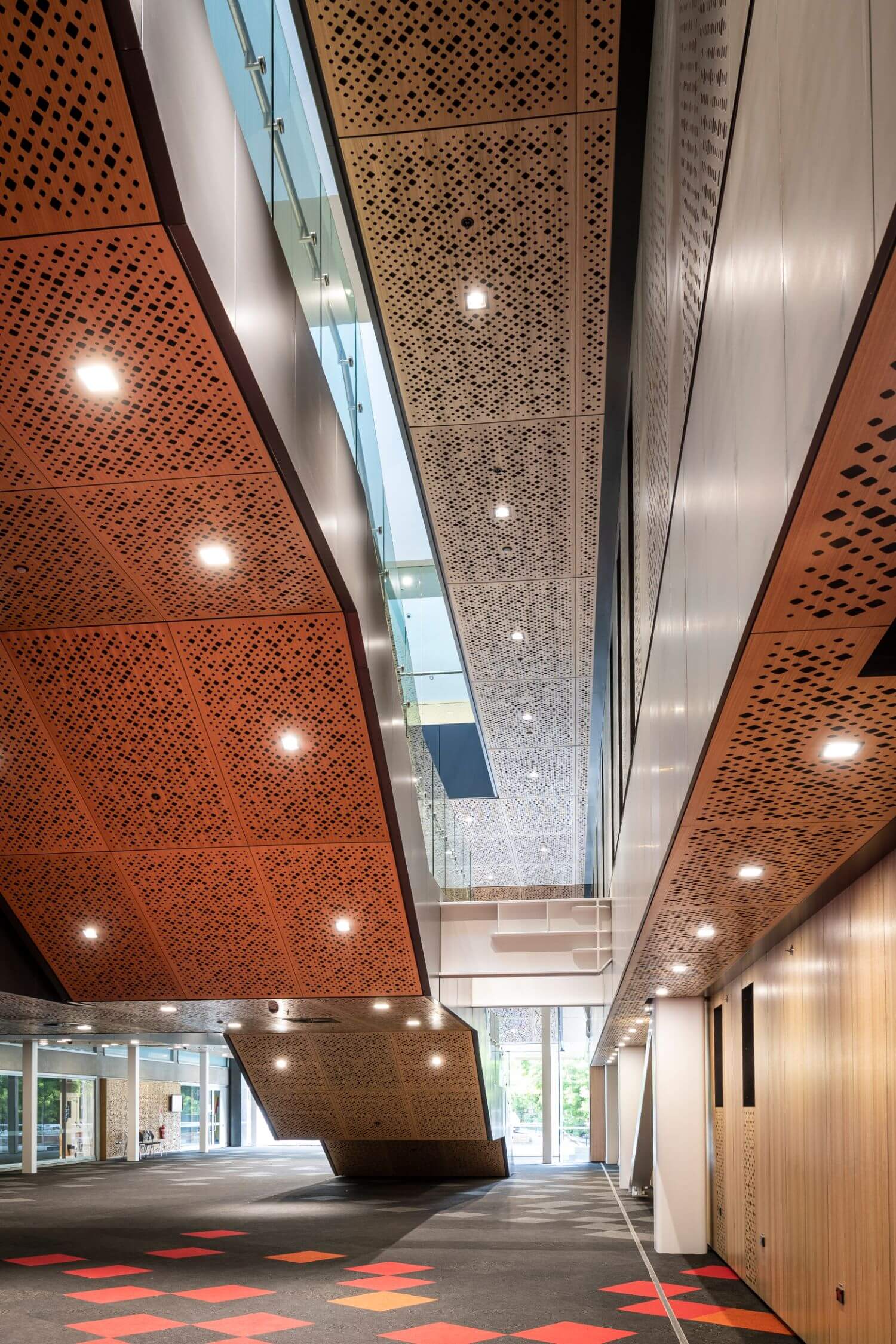





Located on Grafton Road at the corner of Symonds Street, B405 is a 32,000sqm facility for post-graduate research.
The project was designed by Jasmax and built in 30 months by Hawkins, to the highest seismic standards.
Getting the right subcontractors on the job in a heated market was essential to meet the level of complexity and quality required. The success of the project was thanks to the total project team – the client, architect, consultants and the subcontractors – who worked collaboratively and made the decisions necessary to move the project forward.
Planning the work was made easier thanks to the fact that BIM (Building Information Management) was used right from the pre-design phase. It was a truly integrated BIM project, meaning everyone on the job entered their information into the same model, right from the start of the process.
The building has more than 800 rooms of varying shapes and sizes, many of which are laboratories with specialist facilities like fume cupboards and needed specialist services. By creating the building’s digital twin in three dimensions, the project team were able to take some of the risk out of coordinating the services for these rooms. Using the 3D model allowed the project team to identify clashes and solve problems, meaning less rework and fewer materials used.
The Hawkins team began working on-site in June 2017. After demolishing an existing six-storey building, the work began using a construction sequence that allowed the team to work in two places at once. The team would go up three floors with the steel structure, pour one floor, then go up another three. By skipping floors and infilling later, they were able to work in two places at once, which helped achieve the project outcomes.
At its peak, there were 400 to 500 people working on the site each day, so maintaining a strong health and safety culture was essential – not just for the people working on the job, but for the staff and students in the adjoining building.
Integrating services between B405 and the adjoining buildings was challenging – particularly when it came to the fire system and the chillers. The fire alarm system in the old building and the new were quite different and it took considerable problem solving to integrate them.
There were two existing chillers in a large existing plant room which needed to come out and three new ones to install, all while maintaining comfort for those in the existing part of the building.
Naturally the University needed the building to be ready for the start of the new academic year, so there was little room for movement in the programme. The team successfully achieved Project Completion before Christmas 2019, so that the building was ready for the University to occupy in 2020.





